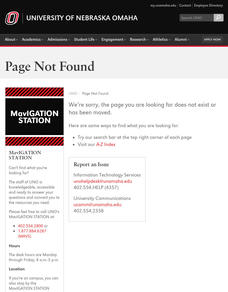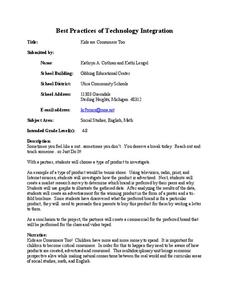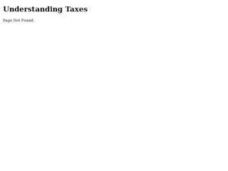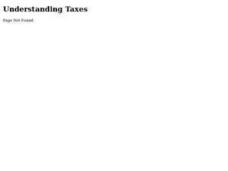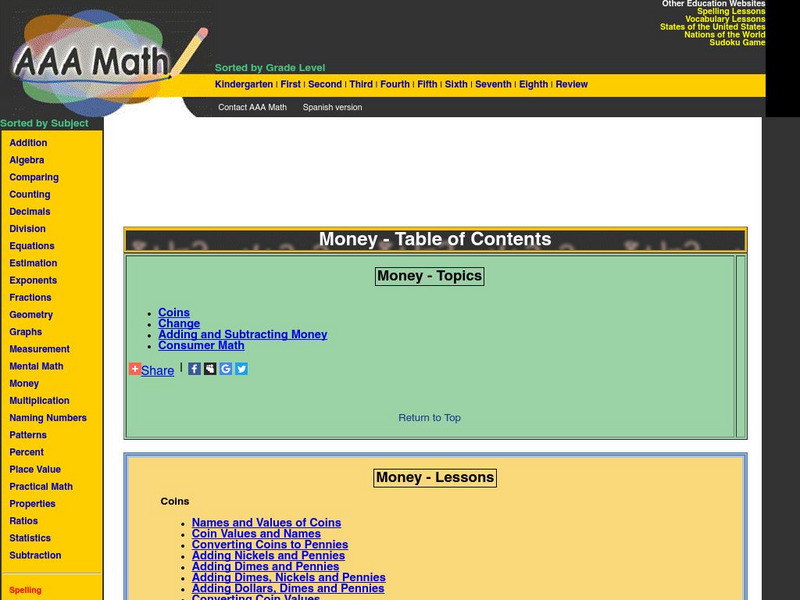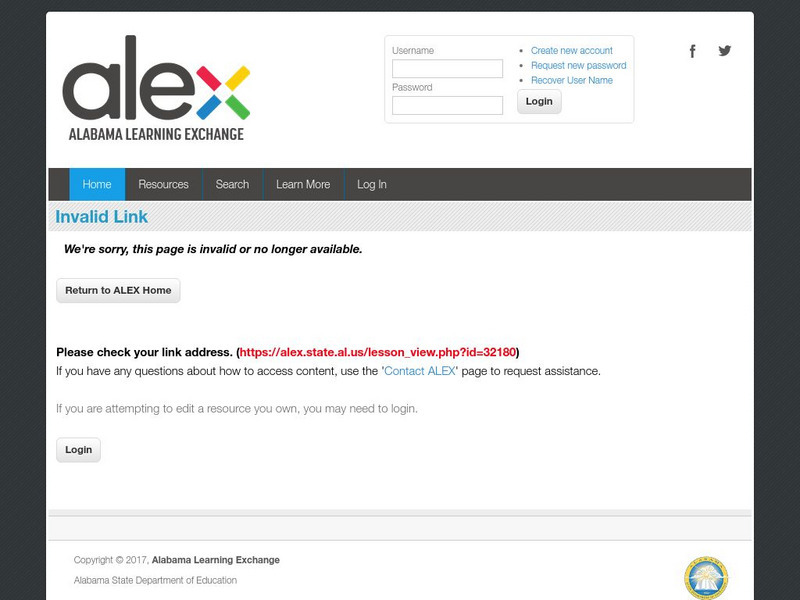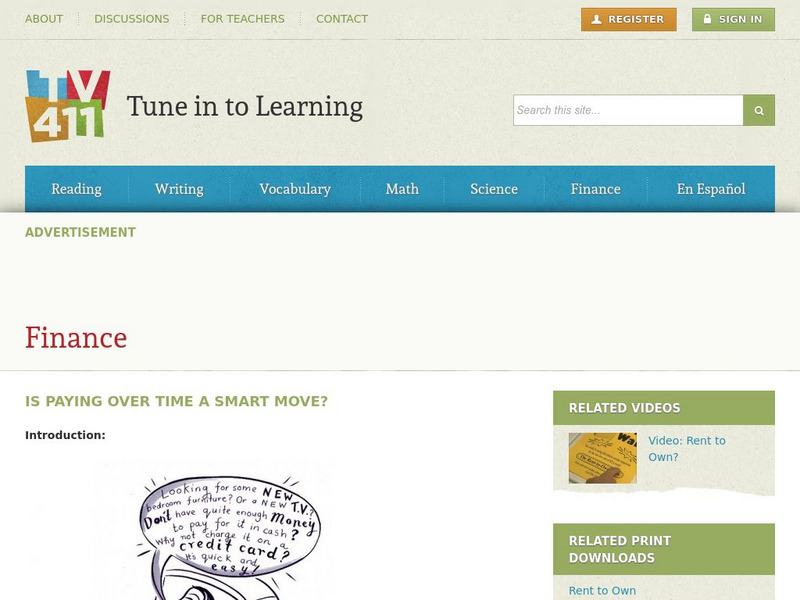Curated OER
How Can Business Profit from Tariffs? p1
Young scholars investigate the impact of tariffs on businesses and consumers during the 1880s by looking at a political cartoon, solving a short math problem and comparing protectionism in the 1980's to protectionism in the 1880's.
Curated OER
Mathematics: Budgeting
Learners develop a month long budget. They use problem solving skills to adjust their budgets for unforeseen expenses. They use checks to pay mock bills.
Curated OER
How Electronics Come to Us: Distribution and Use
Students identify environmental challenges that can be solved throughout a product's life cycle. They experiment and examine how we can choose and use products in an environmentally responsible manner. Each student is also involved in...
Curated OER
Mammoth Sunflower Problem
Students discuss the directions on a package of seeds. They open the package, count the seeds, and determine the planting requirements for the seeds.
Curated OER
Worksheet #3, Derivative Rates, Percent Rate of Change, Chain Rule
In this calculus activity, students answer compute the distance of an object from a given point after t seconds when given the formula. They use the chain rule to answer 2 questions. Students compute the derivatives and sketch a graph of...
Curated OER
Worksheet #5, Concavity,
In this calculus worksheet, learners determine the intervals in which a given relation is concave up. They determine the inflection points of a given formula. Students use the second derivative test to classify the relative extrema of a...
Visa
The Danger of Debt: Avoiding Financial Pitfalls
How can our perspectives of borrowing and returning influence the way we view credit? Pupils explore the concept of debt, how it impacts our ability to obtain credit, and finally the ways in which we can work to alleviate debt.
Visa
Road Rules: Researching and Buying a Car
How do the loan principal, interest rate, and term all factor into a monthly car payment? Introduce your class to some of the key steps and considerations of obtaining a loan and purchasing a car.
Curated OER
Potato: A Tale from the Great Depression
Learners barter for goods within the class. For this economics lesson based on the Great Depression, the teacher introduces the lesson with a picture book, then students are allowed to barter with teacher supplied goods as they examine...
Curated OER
Your Role as a Taxpayer: Why Pay Taxes?
Students evaluate the basic rationale, nature, and consequences fo taxes. They describe why governments need taxes as revenue to provide goods and servicesin this series of activities.
Curated OER
Best Practices of Technology Integration
Students study how a type of product is advertised. In this product advertisement lesson, students research a specific product and its advertisement. Students create a market research survey based on their peers preferences. Students...
Curated OER
The Wealth Tax of 1935 and the Victory Tax of 1942
Learners explain that during the Great Depression and World War II, the Roosevelt administration implemented new, broader, and more progressive taxes in order to cover the costs of the New Deal programs and the war.
Curated OER
To Market to Market
Fourth graders research a product and participate in an integrated simulation of a free market economy where students will create, buy and sell a good or service. In completing this activity, 4th graders understand the concepts and...
Curated OER
The Taxpayer's Rights
Students examine rights of taxpayers and procedures the IRS uses to process tax returns
Curated OER
The Taxpayer's Responsibilities
Students explore system of voluntary compliance, and describe taxpayers' responsibilities related to filing a tax return.
AAA Math
Aaa Math: Consumer Math
From basics such as adding and subtracting money, converting coins, and making change to more advanced topics such as sales tax and simple interest, this interactive tutorial offers help with consumer math issues.
Discovery Education
Discovery Education: Web Math: Math for Everyone
Provides online programs and explanations on everyday math: calculating a tip at a restaurant, determining the sale price of an item, finding the odds of winning a lottery, computing simple and compound interest, and more.
Alabama Learning Exchange
Alex: Becoming a Wise Consumer: Comparison Shopping
In this introductory lesson to money management for teens, students will use everyday math skills to comparison shop a variety of products. Students will learn several ways to save money, including using store discounts, coupons, and...
University of Nebraska Omaha
Ec Ed Web: How Can Big Business Make Money From Tariffs?
In this activity, students investigate the impact of tariffs on businesses and consumers during the 1880s by looking at a political cartoon, solving a short math problem, and comparing protectionism between time periods. They then...
Alabama Learning Exchange
Alex: Money Matters: Where Does It Go?
In this project young scholars will utilize math and reasoning skills to develop a personal budget. By weighing their expenses as "wants" vs. "needs," students will develop management skills and learn the importance of getting the most...
University of Regina (Canada)
University of Regina: Math Central: Stewart Resources Centre: Consumer Wise [Pdf]
A tenth-grade math unit, developed in 1993 by a Saskatchewan teacher, on budgeting.
Scholastic
Scholastic: Adventures in Math: Lesson 2: Saving Money by Finding the Better Buy
Students will be able to make economically sound purchasing decisions by using unit pricing, calculating discounts, and analyzing fixed and variable costs.
Other
Federal Reserve Bank of New York: Econ Explorers Journal [Pdf]
In this collection of lesson activities, learners will complete an "Econ Explorers Journal" to help them learn how economics is involved in their neighborhood, the books they read, in earning a living, at their banks, in their homes, and...
Education Development Center
Tune in to Learning: Is Paying Over Time a Smart Move?
At T.V. 411 you can explore the concept of paying over time with situations involving credit cards, rent to own items, and more. This interactive lesson gives the learner an opportunity to make decisions about money management.


